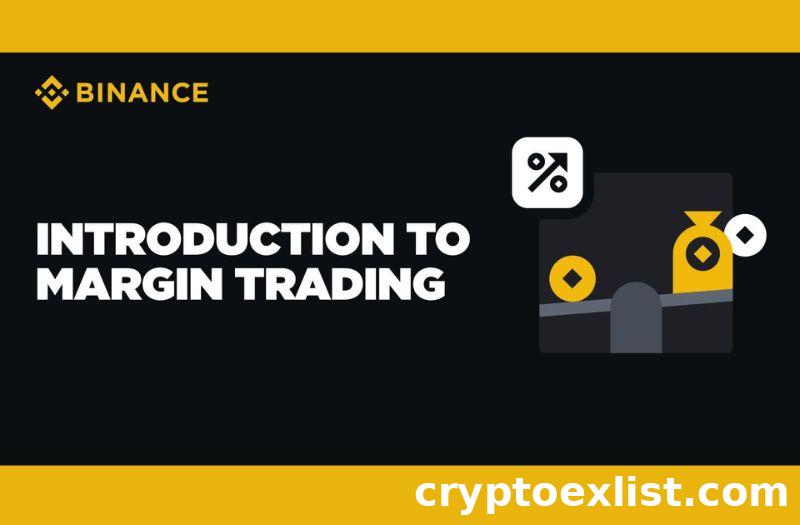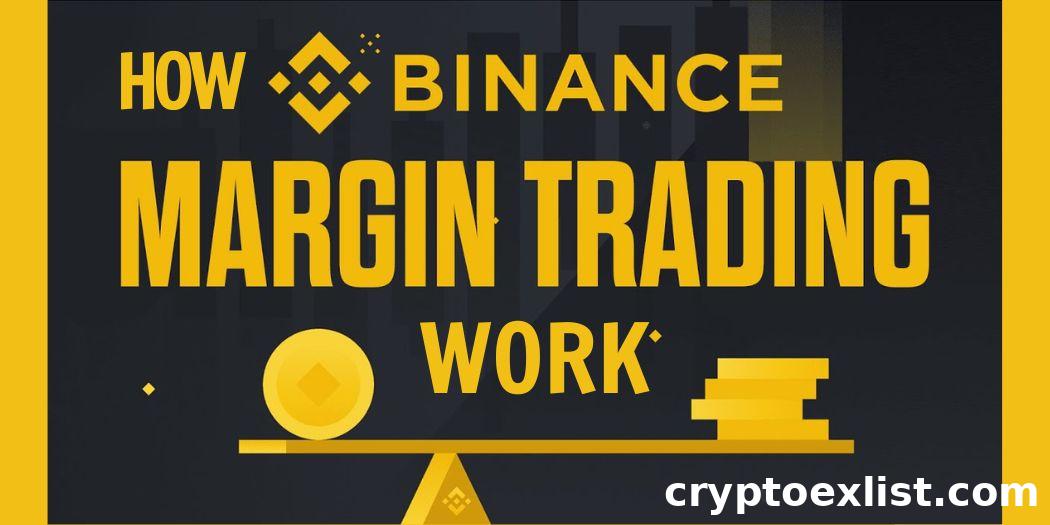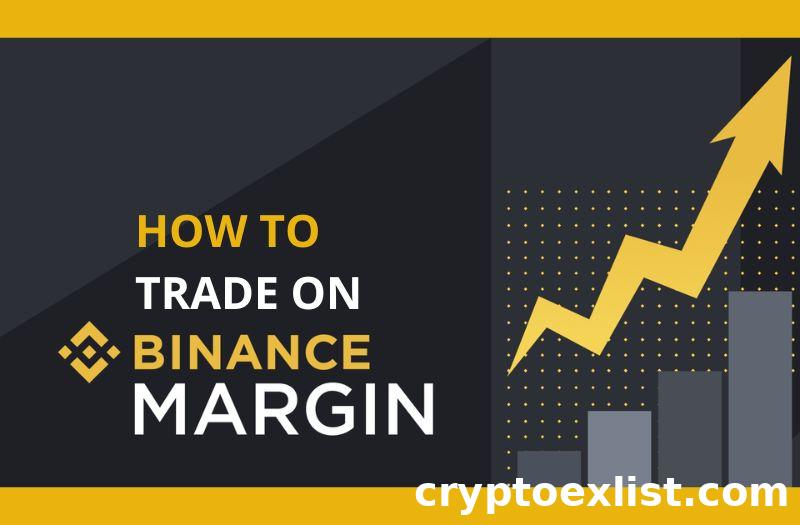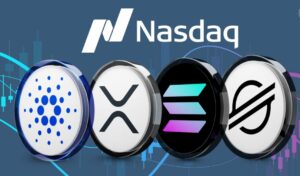
Binance margin trading offers an exciting opportunity for traders to amplify their positions using borrowed funds. Whether you’re looking to trade popular cryptocurrencies or explore other digital assets, margin trading allows you to increase your buying power and potentially earn higher returns. However, margin trading also comes with its own set of risks and costs, such as interest rates and trading fees. In this guide, we’ll walk you through the basics of margin trading on Binance, covering everything from setting up your account to understanding leverage and managing fees, making it easier for beginners to get started.
Introduction to Margin Trading
What is Margin Trading?
Margin trading is a trading method that allows users to borrow funds to increase their buying power, enabling them to take larger positions in the market than they would be able to with just their capital. By using leverage, traders can amplify their potential profits (and losses) depending on market movements. On Binance, margin trading opens up opportunities to trade a variety of cryptocurrencies using borrowed funds, offering flexibility and the chance to profit from both rising and falling markets. However, it’s essential to remember that while margin trading can enhance potential returns, it also comes with higher risks, making it important to approach with caution.
Differences Between Margin Trading and Spot Trading
The primary difference between margin trading and spot trading is the use of leverage. In spot trading, you can only trade with the funds you have available, meaning your profits and losses are directly tied to your investment. On the other hand, margin trading allows you to borrow funds from the platform (like Binance) or from other users, increasing the size of your trades. For instance, with 3x leverage, you can control three times your available capital, potentially leading to larger gains. However, while spot trading limits your risk to the amount you invest, margin trading can lead to losses exceeding your initial capital if the market moves against you.
Benefits of Margin Trading
Margin trading offers several benefits for traders who understand how to manage risk. The most significant advantage is the ability to amplify your returns by taking larger positions through borrowed funds. This is particularly beneficial in a bull market, where prices are rising, and you can profit from small price movements that wouldn’t be as profitable in spot trading. Another benefit is the opportunity to short-sell, meaning you can profit from falling markets by selling assets you’ve borrowed and buying them back at a lower price. Finally, margin trading allows for portfolio diversification, as you can use leverage to spread your investments across multiple assets without needing a large amount of upfront capital. For new traders, it’s crucial to understand these benefits while also managing the risks that come with using leverage.

Understanding Binance Margin Trading
Overview of Binance Margin Trading Platform
Binance’s Margin Trading platform provides traders with an opportunity to amplify their trading positions by borrowing funds to trade cryptocurrencies. The platform is user-friendly, making it accessible to both beginners and experienced traders. Binance offers a seamless transition between spot trading and margin trading, with intuitive tools for managing leverage, tracking positions, and setting stop-losses. It also includes educational resources to help newcomers understand the risks and benefits of margin trading. By offering a range of leverage options and risk management features, Binance ensures that traders have the flexibility to execute both long and short strategies, depending on market conditions.
Types of Margin Accounts on Binance
Binance offers two types of margin accounts: Isolated Margin and Cross Margin.
- Isolated Margin accounts are designed for traders who want to limit the risk to a specific trade. In this type of account, the margin is isolated to a single trading pair, meaning that if your position gets liquidated, only the funds allocated to that trade are affected. It’s ideal for those who prefer to have better control over individual trades and minimize the impact of a bad trade on their overall portfolio.
- Cross Margin accounts, on the other hand, use your entire margin balance to support your positions across all trading pairs. In this case, all your margin balances are shared, meaning that losses in one position can affect the margin available for other positions. While this option allows for more flexibility, it also carries higher risk, as liquidation of one position can result in the loss of funds from other trades.
Supported Cryptocurrencies for Margin Trading
One of the major benefits of Binance Margin Trading is the wide range of supported cryptocurrencies. Binance provides margin trading for over 500 trading pairs, including popular coins like Bitcoin (BTC), Ethereum (ETH), Ripple (XRP), and Binance Coin (BNB), as well as various altcoins. This broad selection allows traders to diversify their portfolios and take advantage of market movements across different assets. Whether you’re looking to trade large-cap cryptocurrencies or explore lesser-known altcoins, Binance’s extensive list of supported cryptocurrencies makes it easy to find the perfect pairs for your trading strategy.
Loan Method
In Binance Margin Trading, the loan method is straightforward. To borrow funds, you simply transfer assets from your spot wallet to your margin wallet and choose the asset you want to borrow. The amount of leverage you choose will determine how much you can borrow. Binance automatically calculates your available loan based on the collateral you have in your margin account. Once the funds are borrowed, they are used to open a leveraged position in your desired trading pair. The borrowed funds are repaid when you close your position, and Binance provides easy repayment options directly through the platform.
Calculate Interest Rate
Interest rates play a crucial role in margin trading because borrowed funds incur interest. On Binance, interest is calculated hourly based on the amount you borrow and the cryptocurrency you trade. Different cryptocurrencies have different interest rates, and these rates fluctuate depending on market conditions and demand for borrowing. Binance provides an interest rate calculator to help traders estimate the cost of borrowing for their margin trades. This tool ensures that traders are fully aware of the interest they will incur, allowing them to factor these costs into their overall trading strategy. Understanding how to manage interest rates is key to maintaining profitable positions in margin trading.

Types of Assets That Can Be Traded on Margin
Popular Cryptocurrency
When it comes to margin trading on Binance, the most popular cryptocurrencies are often at the forefront. These include major assets like Bitcoin (BTC), Ethereum (ETH), Binance Coin (BNB), Ripple (XRP), and Litecoin (LTC). These well-established cryptocurrencies are highly liquid, meaning that there’s always a large volume of trades happening, which allows for faster execution and reduced slippage. For traders looking to capitalize on significant market movements or price fluctuations, trading popular cryptocurrencies on margin can be an effective strategy. Their high liquidity also means you can easily open and close positions, making them ideal for both short- and long-term margin trading strategies.
Other Digital Assets
In addition to popular cryptocurrencies, Binance supports margin trading for a variety of other digital assets. These include altcoins such as Cardano (ADA), Polkadot (DOT), Solana (SOL), and Chainlink (LINK). Altcoins often experience higher volatility compared to major cryptocurrencies, providing opportunities for traders to profit from rapid price swings. While these assets may not have the same trading volume as Bitcoin or Ethereum, they offer unique potential for higher returns due to their fluctuating prices. However, the higher volatility also means an increased level of risk, so it’s important for traders to carefully research the market and understand the characteristics of these assets before using them in margin trading.
Choose Suitable Assets
Choosing the right asset for margin trading depends on your risk tolerance, market knowledge, and trading goals. For beginners, it’s often recommended to start with high-liquidity assets like Bitcoin or Ethereum due to their established market presence and predictable price movements. These assets provide a safer entry point into margin trading with more stability. For more experienced traders, exploring volatile altcoins can present higher profit opportunities, but it requires a deeper understanding of market trends and technical analysis. When choosing suitable assets for margin trading, it’s crucial to balance your portfolio, taking into consideration the leverage you’re using and the market conditions of each asset to minimize risk and maximize potential gains. On Binance, the platform’s wide selection of supported assets gives traders the flexibility to build a diverse and strategic portfolio.
Setting Up Your Margin Account on Binance
Creating a Binance Account
Before you can start margin trading on Binance, the first step is to create a Binance account. If you’re new to the platform, the sign-up process is straightforward and user-friendly. Simply visit the Binance website or download the app, click on the “Register” button, and follow the prompts to provide your email address, create a password, and complete identity verification (KYC). Once you’ve verified your identity, your account is ready, and you can explore the wide range of features Binance has to offer. For beginners, Binance provides an intuitive dashboard that makes navigating between spot, margin, and other types of trading simple and efficient.
Enabling Margin Trading
After setting up your Binance account, you’ll need to enable margin trading. This can be done directly from your account settings. On the Binance platform, navigate to the “Wallet” section and select “Margin.” You’ll be prompted to review and agree to Binance’s margin trading terms and conditions, which outline the risks and mechanics of trading with borrowed funds. It’s important to read and understand these terms before proceeding, as margin trading involves higher risks compared to spot trading. Once you’ve agreed, margin trading will be enabled, and you’ll have access to all the tools and features that allow you to borrow funds and trade with leverage on the Binance platform.
Transferring Funds to Your Margin Account
Once margin trading is enabled, the next step is to transfer funds from your spot wallet to your margin account. This can be done easily within the Binance interface. Go to your margin wallet, click on the “Transfer” button, and select the cryptocurrency you wish to move from your spot wallet to your margin wallet. The funds in your margin account serve as collateral for the funds you’ll be borrowing. Depending on the amount of collateral you have, Binance will calculate how much leverage you can use and the amount you can borrow for your trades. Be sure to carefully manage the amount of funds you transfer, keeping in mind that higher leverage increases both potential profits and risks. Once the transfer is complete, you’re ready to begin margin trading on Binance.
How to Trade on Binance Margin
Choosing the Right Trading Pair
When starting margin trading on Binance, selecting the right trading pair is one of the most important decisions you’ll make. Binance offers a wide range of trading pairs, including popular combinations like BTC/USDT, ETH/BTC, and BNB/USDT, as well as numerous altcoin pairs. To choose the best trading pair for your strategy, consider the liquidity of the pair and the current market trends. High-liquidity pairs such as BTC/USDT offer smoother trading experiences with quicker executions, making them ideal for beginners. Additionally, researching market trends and understanding which assets are showing momentum can help you make informed decisions when selecting a trading pair. Binance also provides various tools to help you analyze price movements, volume, and other factors that influence market activity.
Placing Margin Orders
Once you’ve selected your trading pair, the next step is to place a margin order. On Binance, you can choose between several types of orders, including market orders, limit orders, and stop-limit orders.
- Market orders are executed immediately at the current market price, which is ideal for traders who want to enter or exit a position quickly.
- Limit orders allow you to set a specific price at which you want your order to be executed, giving you more control over the price.
- Stop-limit orders combine a stop price and a limit price to protect against major market fluctuations.
Once your order is placed, Binance will automatically borrow the required funds based on your collateral and leverage settings. It’s important to monitor your positions regularly to ensure you’re managing risk effectively. By utilizing these different order types, you can implement a strategic approach to your margin trades on Binance.
Understanding Leverage in Margin Trading
Leverage is a key concept in margin trading, allowing you to control a larger position than your initial capital would normally allow. For example, with 5x leverage, you can borrow funds to increase your position size by five times. On Binance, you can adjust the level of leverage you wish to use depending on the asset and your risk tolerance. While leverage can significantly boost your potential profits, it also increases your risk exposure. If the market moves against your position, losses can be magnified, and you could face a margin call where Binance requires you to add more funds to maintain your position. Understanding the right amount of leverage to use and applying proper risk management techniques is crucial for success in margin trading. It’s often recommended to start with lower leverage, especially for new traders, and gradually increase it as you become more comfortable with the process.

Fees and Costs Associated with Margin Trading
Trading Fees on Binance
When engaging in margin trading on Binance, understanding the trading fees is essential to managing your overall costs and maximizing profitability. Binance uses a tiered fee structure based on your 30-day trading volume and whether you’re a maker or a taker. Makers, who provide liquidity by placing limit orders, generally pay lower fees than takers, who remove liquidity from the market with market orders. For most traders, the base fee starts at 0.1% for both makers and takers, which can be further reduced if you hold Binance Coin (BNB) in your account. By using BNB to pay for trading fees, you can receive a 25% discount, significantly lowering the cost of each trade. For margin traders, these fee reductions can add up quickly, making it crucial to factor them into your trading strategy.
Interest Rates on Borrowed Funds
One of the most important costs in margin trading is the interest rate on the borrowed funds. When you borrow capital from Binance to open a larger position, you’re required to pay interest on the borrowed amount. The interest rate varies depending on the cryptocurrency you’re borrowing, with stablecoins like USDT often having lower rates compared to more volatile assets like BTC or ETH. Binance calculates interest rates hourly, meaning that the longer you hold your margin position, the more interest you’ll pay. To keep your margin trading profitable, it’s important to regularly monitor the interest you’re accruing and ensure it doesn’t outweigh your potential gains. Binance provides an interest rate calculator that makes it easy for traders to estimate costs before borrowing funds.
Withdrawal Fees for Margin Accounts
In addition to trading fees and interest rates, Binance charges withdrawal fees when you transfer funds out of your margin account. These fees vary depending on the cryptocurrency being withdrawn. For example, withdrawing Bitcoin has a different fee than withdrawing Ethereum or USDT. While these fees are typically small, they can add up over time, especially for traders who frequently move funds between accounts. It’s important to plan your withdrawals strategically and consolidate transfers when possible to minimize fees. Binance provides transparent fee schedules on its platform, ensuring traders are always aware of the associated costs before making a withdrawal. Understanding and managing these fees is key to ensuring your margin trading remains cost-effective.
Conclusion
Margin trading on Binance opens up a world of opportunities for traders who are looking to maximize their profits by borrowing funds and leveraging their positions. With a user-friendly interface, a wide range of supported assets, and tools that cater to both new and experienced traders, Binance makes it easy to get started. However, as with any form of trading, margin trading comes with its risks—especially when dealing with leverage. To succeed, it’s essential to understand the mechanics, choose the right trading pairs, and carefully manage your fees and interest rates. By approaching margin trading with a solid strategy and a focus on risk management, you can take full advantage of the features Binance offers while minimizing potential downsides.























